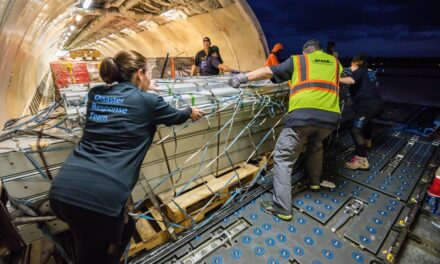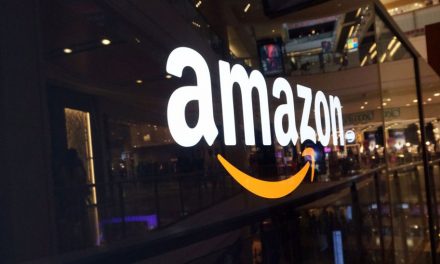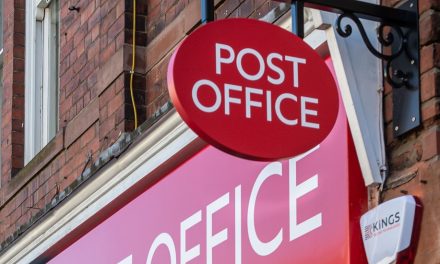
The Snowball Effect

This article is an extract from the Autumn Edition of MER Magazine published in August 2018. You can read the full article as well as other articles from MER for free by visiting digital.mailandexpressreview.com.
David Jinks MILT, Head of Consumer Research at ParcelHero, looks at how the snowballing urban home delivery revolution could transform our cities.
In May 1984, 72-year-old Gateshead grandmother Jane Snowball purchased groceries from her local Tesco store in the world’s first ever online home shopping transaction. So you could say that the global e-commerce avalanche began with one English Snowball – albeit one shopping with a Ceefax-style TV based device.
Today we are truly feeling the impact of the arrival of e-commerce: you might say it’s snowballed! From BHS’ collapse to House of Fraser’s current woes – it’s carnage on the High Street.
In 2012 there were 290,000 shops on UK High Streets; by 2030 ParcelHero’s recent report: 2030: The Death of the High Street, reveals just 130,000 High Street stores are likely to survive because of the impact of e-commerce.
The High Street could become a ghost town by 2030, with e-commerce accounting for 40% of all retail sales.
With no shops left, how will city slickers get suited and booted in the future? Naturally Amazon believes it has the solution. E-commerce based companies such as Amazon and ASOS have invested huge sums in building up their delivery options for urban areas in particular.
Amazon uses its global supply chain as a sales tool. Put simply, it wants all of us to become members of its Amazon Prime membership scheme: that’s because Prime members spend twice as much as non-members. So Amazon uses Prime delivery options to lure in new members. For urban consumers Amazon offers everything from free deliveries to same day to Prime Now One-hour and even grocery deliveries.
Obviously then, the more Amazon can bring all retailers and traders into its supply chain – the more it can use delivery options to draw in yet more Prime Members. Hence ‘Fulfilment by Amazon’.
FBA delivers products for traders and retailers of all sizes: managing their customer service and returns. It’s all part of Amazon’s avowed aim to be the pipeline through which everything we buy is delivered. And that’s going to transform city deliveries in particular.
Amazon scarcely turned a profit in its first 14 years, spending its income building its supply chain. Its long-term shareholders were happy to put up with the pain as they could see the end goal. That’s because they could see the bigger picture. Amazon’s goal is to control end-to-end supply chains. And it is prepared to invest handsomely in the future.
Remember your last Amazon order? Was it delivered by a good old red Royal Mail van? Maybe – but the chances are your parcel arrived with Amazon Logistics stickers all over it. Amazon needs same day and one-hour delivery options traditional delivery companies just couldn’t offer. So it set about creating its own logistics operation, trialing it here in the UK.
In the US, Amazon is now encouraging entrepreneurs to create their own – Amazon branded – delivery companies: and it’s offering all kinds of subsidies and help.
And don’t go thinking Amazon Logistics is just for Amazon deliveries: it has now moved into supplying Chinese/US shipping services: Amazon Logistics+ is targeting Alibaba wholesalers. Alibaba may be the king of low value Chinese trading; but Amazon is cutting itself a slice of the action by offering discount shipping rates between China and the US. Don’t forget, Amazon wants to be the pipeline through which everything we buy is delivered. It’s prepared to splash the cash to achieve this.
Amazon even flies 32 Amazon Air Boeing 767 freighters out of Kentucky to control its US distribution network.
From its ‘Uberwhelming’ Amazon Flex gig urban deliveries – which appears to have beaten off the competition from Ubers’ failed UberDash ‘Uber for things’ delivery service – to Amazon Logistics’ same-day and city-based Prime Now one-hour services, Amazon is aiming for total control of its inner-city supply chain.
Transforming distribution centres
Meanwhile, UK home deliveries are being transformed by the impact of e-commerce. Amazon, ASOS and other successful online retailers are transforming the requirements of the UK’s supply chains. This means a radical re-think of today’s distribution centres (DCs). To meet today’s environmental challenges, and the demands of e-commerce-based supply chains, hub & spoke logistics will feature mega hubs on city outskirts serving far smaller hubs inside urban areas
This model will fit far better a new era in which deliveries are made directly from distribution centre to the customer – bypassing the need for retailers’ distribution networks. Of course, this means the dreaded ‘C’’ word: Freight operators and retailers will need to Cooperate to integrate supply chains.
This has already happened successfully in the UK during the 2012 Olympics. The Olympics also introduced night-time Quiet Deliveries in London. Green vehicles, from autonomous electric and hydrogen vehicles to droids and drones will then deliver Final Mile logistics.
But there are bigger ideas around surrounding the ultimate development of distribution centres. For example, Amazon has patented floating warehouses called Airborne Fulfilment Centres that sort items en route and could be used at special events etc. AFC’s would be in position over major cities ready for peak delivery times and would be ideal for music festivals and sporting events.
This article is an extract from the Autumn Edition of MER Magazine published in August 2018. You can read the full article as well as other articles from MER for free by visiting digital.mailandexpressreview.com.












